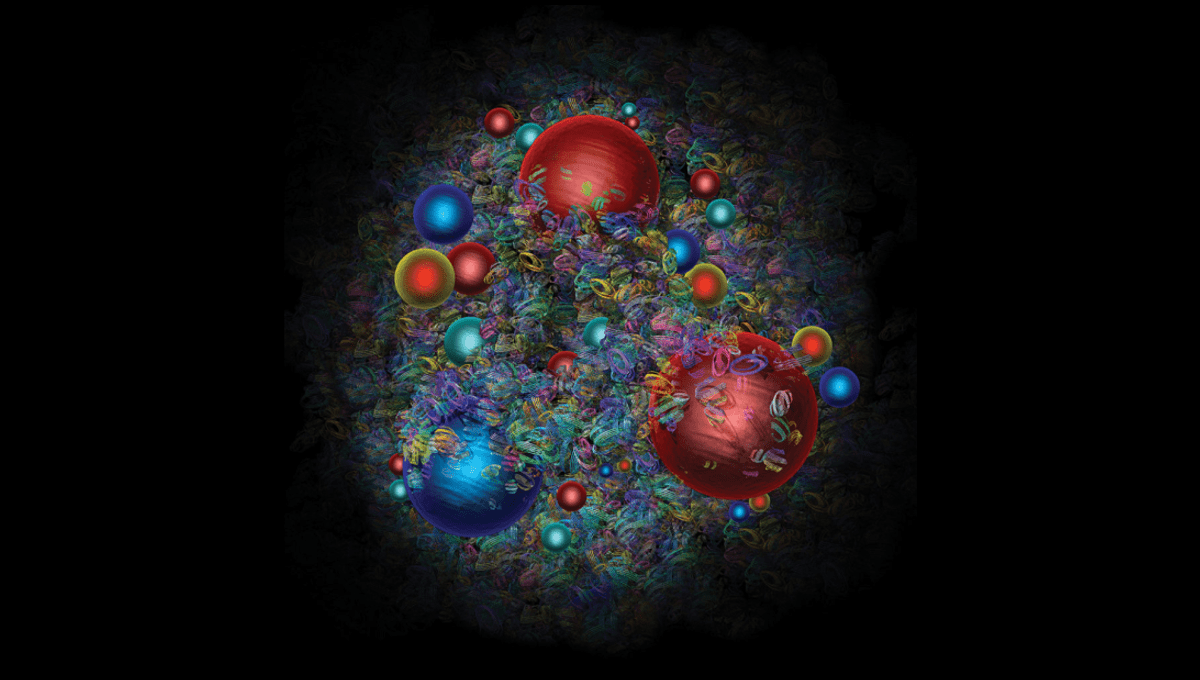
Protons, once thought to be fundamental particles, have been known since 1968 to instead be composed of quarks. Some quarks are actually heavier than protons, but this wasn’t considered a problem because protons were thought to be made up purely of light quarks – two up and one down quark to be precise. However, new research shows protons also contain charm quarks, which are indeed heavier than protons, like a pot holding a bigger pot inside it.
“That goes against all common sense,” said Dr Juan Rojo of Vrije Universiteit Amsterdam in a statement. “It’s like buying a one-kilogram pack of salt, which then comes out two kilograms of sand.”
However, anyone highly attached to common sense dropped out of quantum mechanics courses in the first six weeks, so Rojo and co-authors were undeterred. In Nature they have revealed that less than one percent of the proton’s mass comes from quarks heavier than the proton.
The reason such a thing is possible is that quantum physics is all about probabilities, rather than absolutes. If a quark has one chance in a thousand of being part of a particle it will contribute 0.1 percent of its mass to it, rather than usually zero and occasionally 100 percent as our classical experiences would lead us to expect.
The contribution arises because fundamental particles and their antiparticles are constantly fizzing into existence before annihilating each other, a process tracked by parton distribution functions (PDFs). It turns out one of the places charm and anticharm quarks like to do this is inside protons.
The mass of fundamental particles is measured in electron volts divided by the speed of light (e=mc2, after all). Up quarks are around 2.2 Mev/c2 and down quarks 4.7 Mev/c2. The rest of the proton’s 0.9 GeV/c2 is made up by the constituent’s particle’s kinetic energy. Charm on the other hand are 1.5 GeV/c2: about 700 times more massive than an up quark. It’s a bit like a (very charming) elephant spontaneously appearing in a room full of people whose masses, even combined, are less than its, but only if it quickly annihilated itself with an anti-elephant.
As far back as the early 1980s, some evidence was found for the possibility that heavy quarks provided some of the proton’s mass. However, even in quantum physics, extraordinary claims require extraordinary proof, and at that point the observations were not considered convincing.
Now, Rojo and co-authors believe they have the evidence not in the form of new observations, but through using artificial intelligence to analyze the results of half a million proton collisions performed for other experiments. This found only a 0.3 percent chance the products observed could have occurred if protons had no charm quark PDF at all.
Finding the charm presence has been complicated by the fact that most of what we know about protons comes from smashing them together so they break apart in ways that reveal the constituent particles. To do this we have to accelerate them to great speeds, and the energy involved creates the conditions for heavy quarks to appear. If charm quarks are detected it is hard to be sure if they were intrinsically present in the protons, or a consequence of the high energy environment.
Rojo argues that even though the charm quark’s PDF contributes a tiny proportion of the proton mass, the discovery is still important. “We shoot protons at each other and look for subtle anomalies that could indicate new particles or forces,” he said. “You can only do that if you perfectly understand what you are shooting at each other.”
[H/T: New Scientist]
Source Link: Protons Contain Charm Quarks Heavier Than Themselves